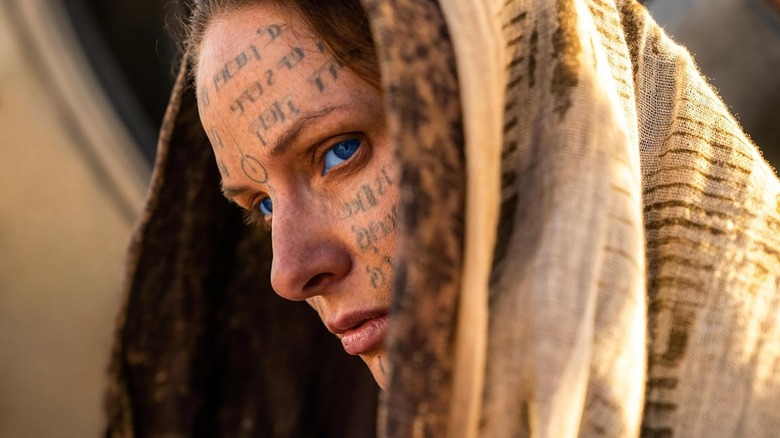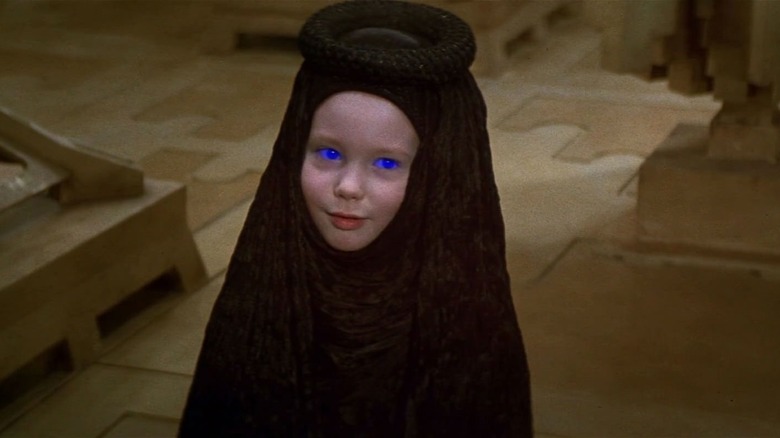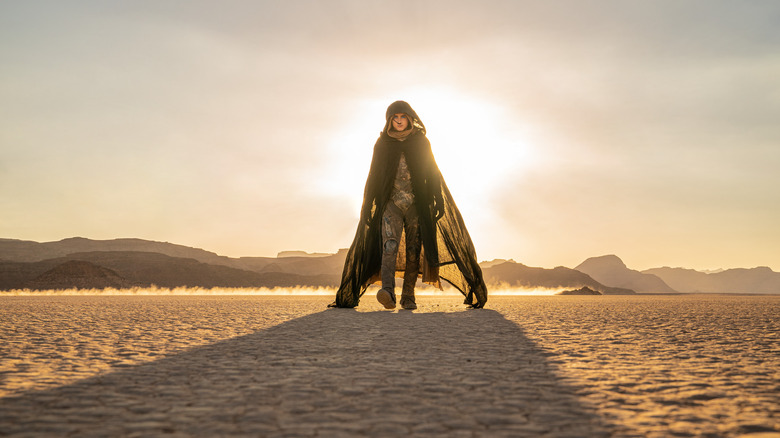What That Strange Dune: Part Two Cameo Means (And How It Could Figure Into A Third Movie)
Major spoilers for "Dune: Part Two" follow.
"Dune" fans recently got a surprise when it was revealed that Anya Taylor-Joy has a secret role in "Dune: Part Two," Denis Villeneuve's massive blockbuster follow-up to his 2021 sci-fi epic "Dune." There was no word on who Taylor-Joy was playing in the film, just that she was lurking somewhere within the movie's 167-minute runtime. Now that the cat is out of the bag, and critics (like yours truly) have had a chance to see the film, we can finally talk about who Taylor-Joy is playing in "Dune: Part Two," and what it all means.
First thing first: if you're an Anya Taylor-Joy fan hoping to see a lot of her, I have some disappointing news: she only appears in the film during one brief scene. Her voice is heard later. And that's it! It's a very quick cameo. In fact, it's so brief that you might actually miss it if you're not paying close attention. But who is she playing? She's playing Alia Atreides, sister of Timothée Chalamet's Paul Atreides and daughter of Lady Jessica (Rebecca Ferguson) and the deceased Duke Leto Atreides (played by Oscar Isaac in the first film).
Who is Alia Atreides?
In "Dune: Part Two," Jessica is still pregnant with Alia and doesn't actually give birth to her during the course of the film. However, Jessica can communicate with her unborn daughter with telepathy. Paul briefly has a vision of his (grown) sister guiding him through the desert, and it's at that point we see Taylor-Joy's cameo. Alia is not an ordinary unborn baby, either. Because Jessica drinks some mysterious sandworm extract known as the Water of Life (or worm juice, as I call it), the unborn child within Jessica is suddenly granted special powers.
In the "Dune" book, Alia is born with the mental abilities of a fully grown adult — she's basically an adult in a child's body. A child with this much power is usually killed by the Bene Gesserit, the manipulative religious order that Jessica belongs to. But Jessica, living among the Fremen, decides to keep the baby. As a result, Alia is labeled an Abomination. In the book, Alia grows to be about four years old ("Dune: Part Two" condenses the timeline to a matter of months instead of the years that span in the novel). During a big climactic battle in the novel, Alia even commands groups of soldiers and kills some people. Yep, she's a deadly kid.
Alia has actually been depicted on screen before — she shows up in David Lynch's "Dune," played by Alicia Witt.
What the future holds
As of now, there's no official word on a third "Dune" movie. Denis Villeneuve has expressed interest in making one and is even developing a script, but no announcement has been made by the studio. But if a third movie happens, it begs the question: will Anya Taylor-Joy return as Alia Atreides? The character certainly figures more prominently in the sequel books "Dune Messiah" and "Children of Dune."
Naturally, there are spoilers for the novel "Dune Messiah" and "Children of Dune" and a potential third movie below. Proceed with caution.
In "Dune Messiah," Alia is older and in a relationship with a character named Hayt. And here's where things get weird — Hayt is actually Duncan Idaho, the character played by Jason Momoa in the first film, brought back from the dead. During the course of the book, Paul ends up blinded and heads off into the desert, which allows his sister Alia to take over and raise his children.
In "Children of Dune," Alia has become a more villainous character, craving power and guided by her dead grandfather, Baron Harkonnen. I could easily see Villeneuve combining the events of "Dune Messiah" and "Children of Dune" into one big, sprawling epic, which would give Taylor-Joy plenty of juicy material to work with — if she chooses to return at all. For now, though, her presence in the world of "Dune" is just a fun, quick cameo.


